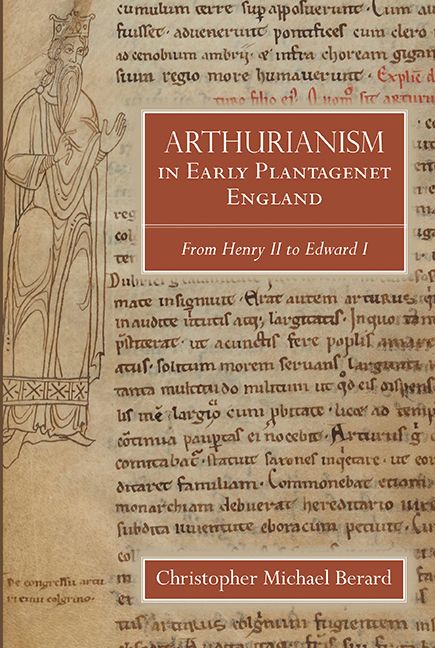Book contents
- Frontmatter
- Contents
- List of abbreviations
- Genealogical Table of the Sovereigns of England from William I to Edward II
- Introduction
- 1 Arthurianism during the reign of Henry II, 1154–1189
- 2 Arthurianism during the reign of Richard I, 1189–1199
- 3 Arthurianism during the reign of King John, 1199–1216
- 4 Arthurianism during the reign of Henry III, 1216–1272
- 5 Arthurianism during the reign of Edward I, 1272–1307
- Conclusion
- Bibliography
- Acknowledgments
- Index
- Miscellaneous Frontmatter
1 - Arthurianism during the reign of Henry II, 1154–1189
Published online by Cambridge University Press: 25 March 2020
- Frontmatter
- Contents
- List of abbreviations
- Genealogical Table of the Sovereigns of England from William I to Edward II
- Introduction
- 1 Arthurianism during the reign of Henry II, 1154–1189
- 2 Arthurianism during the reign of Richard I, 1189–1199
- 3 Arthurianism during the reign of King John, 1199–1216
- 4 Arthurianism during the reign of Henry III, 1216–1272
- 5 Arthurianism during the reign of Edward I, 1272–1307
- Conclusion
- Bibliography
- Acknowledgments
- Index
- Miscellaneous Frontmatter
Summary
The political orientation of the figure of King Arthur
Between 1185 and 1216, Laʒamon, a priest of the Worcestershire village now known as Areley Kings, wrote a history of ‘England’ in early Middle English. In his preface, he announces ‘þet he wolde of Engle þa æðelæn tellen’ (that he would relate the noble origins of the English). This description is misleading because Laʒamon's text centers on the vicissitudes of the British ancestors of the Welsh and their eventual loss of the core of Britain to the Anglo-Saxons. Laʒamon's main source was Wace's Roman de Brut (1155), itself an Anglo-Norman verse translation of Geoffrey of Monmouth's Historia regum Britannie (c. 1136–8). Although Laʒamon amplified his source material, his adaptation largely upholds the symmetry of the Galfridian chronicle tradition. Arthur thus features prominently in Laʒamon's Brut. The text is distinctive not only for furnishing the earliest known appearance of Arthur in an Englishlanguage text but also for the extent of its anglicization of the king. Under Laʒamon's quill, Arthur became an epic hero after the fashion of his mortal enemies, the Anglo-Saxons. Laʒamon dressed Arthur in Anglo-Saxon battle dress. Arthur wore a corselet of woven steel and steel hose fashioned by an elven smith named Wygar, an analogue to Weland, the elven weapon smith who appears in Beowulf and the Old English Boethius. And although Laʒamon was expressly aware of the distinction between Britain and England, he ‘slipped’ into anachronism and spoke of Arthur as ruling over England on at least two occasions. Most remarkably, Laʒamon made Arthur a messianic hero not simply for the descendants of the Britons but for the English as well.
Laʒamon lived only about an hour's ride from the Welsh March and conceivably had some knowledge of Welsh prophetic tradition, but he need not have drawn upon Welsh sources for his account of the myth of King Arthur's survival. Indeed, he likely did not turn to Welsh tradition in this instance. By the time he was writing, the idea that the Britons (the Bretons, the Cornish, and the Welsh) were awaiting Arthur's return had long been a cliché in Insular and Continental writing. Laʒamon perpetuated this stereotype of the Britons.
- Type
- Chapter
- Information
- Arthurianism in Early Plantagenet EnglandFrom Henry II to Edward I, pp. 13 - 76Publisher: Boydell & BrewerPrint publication year: 2019



